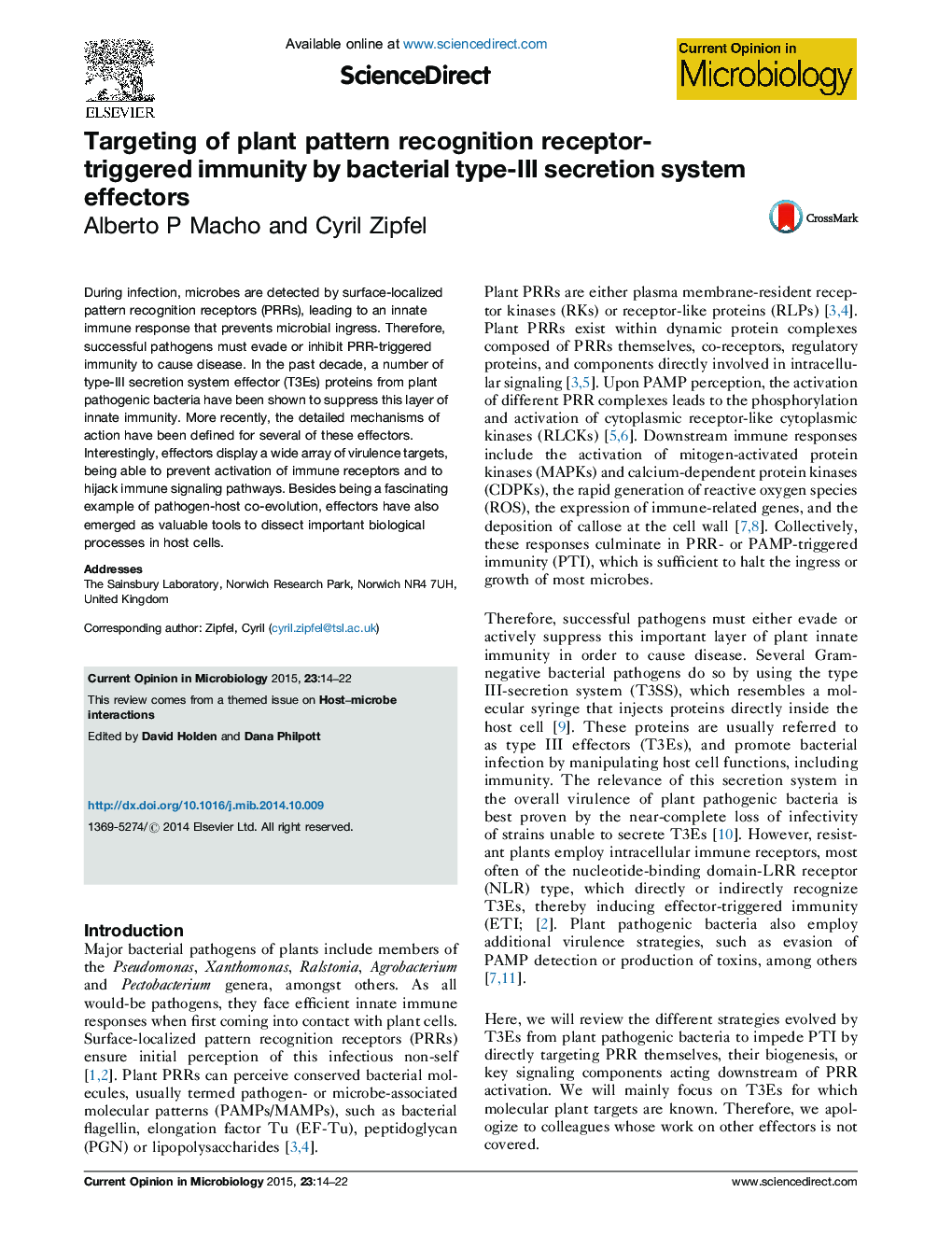| Article ID | Journal | Published Year | Pages | File Type |
|---|---|---|---|---|
| 6131941 | Current Opinion in Microbiology | 2015 | 9 Pages |
Abstract
During infection, microbes are detected by surface-localized pattern recognition receptors (PRRs), leading to an innate immune response that prevents microbial ingress. Therefore, successful pathogens must evade or inhibit PRR-triggered immunity to cause disease. In the past decade, a number of type-III secretion system effector (T3Es) proteins from plant pathogenic bacteria have been shown to suppress this layer of innate immunity. More recently, the detailed mechanisms of action have been defined for several of these effectors. Interestingly, effectors display a wide array of virulence targets, being able to prevent activation of immune receptors and to hijack immune signaling pathways. Besides being a fascinating example of pathogen-host co-evolution, effectors have also emerged as valuable tools to dissect important biological processes in host cells.
Related Topics
Life Sciences
Immunology and Microbiology
Microbiology
Authors
Alberto P Macho, Cyril Zipfel,
